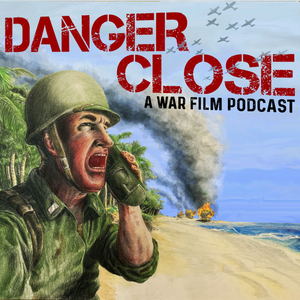Rich Stephens
Minor on History, focusing on military history
Incident(s) the film touches on?
Irish War for Independence and subsequent Irish Civil War
Brief outline of how we got to the events depicted in the film:
1.) The Act of Union 1800 unites the Kingdom of Great Britain and the Kingdom of Ireland to create the United Kingdom of Great Britain and Ireland.
2.) Irish Republicanism – and other Irish nationalist groups rise over the next 100 years in opposition to the Act of Union.
3.) The Easter Rising of 1916 – which only lasted a few weeks – intensified revolutionary feelings, bolstered Sinn Fein during the intervening years, and lead to many smaller incidences prior to the declaration of war with England.
4.) In the Irish General Election of 1918, the Republican Sinn Fein party wins 70% of the Irish vote. These Irish Members of Parliament create their own Irish Parliament – the Dail Eilreann in January 1919 – and declare the existence of a new Irish Republic.
5.) In September 1919 The British declare the Dail an illegal assembly, and Ireland still a part of the United Kingdom.
6.) The Irish War for Independence is fought between the Irish Republican Army (IRA, the army of the Irish Republic) and British forces under the Royal Irish Constabulary (RIC). The later bolstered by Auxiliaries and the Black and Tans (the majority of which were former British soldier who had fought in WWI.)
Interesting Facts?
Not mentioned directly by name, but the IRA road-side ambush of British forces depicted is an allusion to an actual event - Kilmichael ambush. A force of 36 IRA ambushed 18 officers in trucks resulting in 3 IRA and 17 RIC killed. The ambush was seen as a reprisal for Bloody Sunday (in which RIC Black and Tans opened fire on Irish civilians gathered to watch a football match.)
There were many sub-groups of Irish revolutionaries fighting and opposing British rule.
The film focuses on an IRA “flying column,” a small, independent fighting force. Communist groups in Ireland were actively opposing British rule as well. This is alluded to with the Train engineer conversation and Damien’s feeling during the Civil War.
The Irish Civil war started about one year after the Irish War of Independence. Dispute over the Anglo-Irish Treaty – which proclaimed Ireland a “dominion” of the United Kingdom (like other commonwealth nations) and not an independent Republic. Staunch Irish republicans would only settle for complete self-independence.
The proximity of these events to WW I cannot be understated. The British units in Ireland (the Black and Tans) were veterans of the WW I. Life in the trenches had taken its toll on them, and they had a reputation for brutality. The British government and public had little appetite for more bloodshed so soon after the war (which ended in only a few months prior to the Irish War of Independence.)
Works Cited:
DeRosa, Peter. Rebels: the Irish Rising of 1916.
www.theirishwar.com
